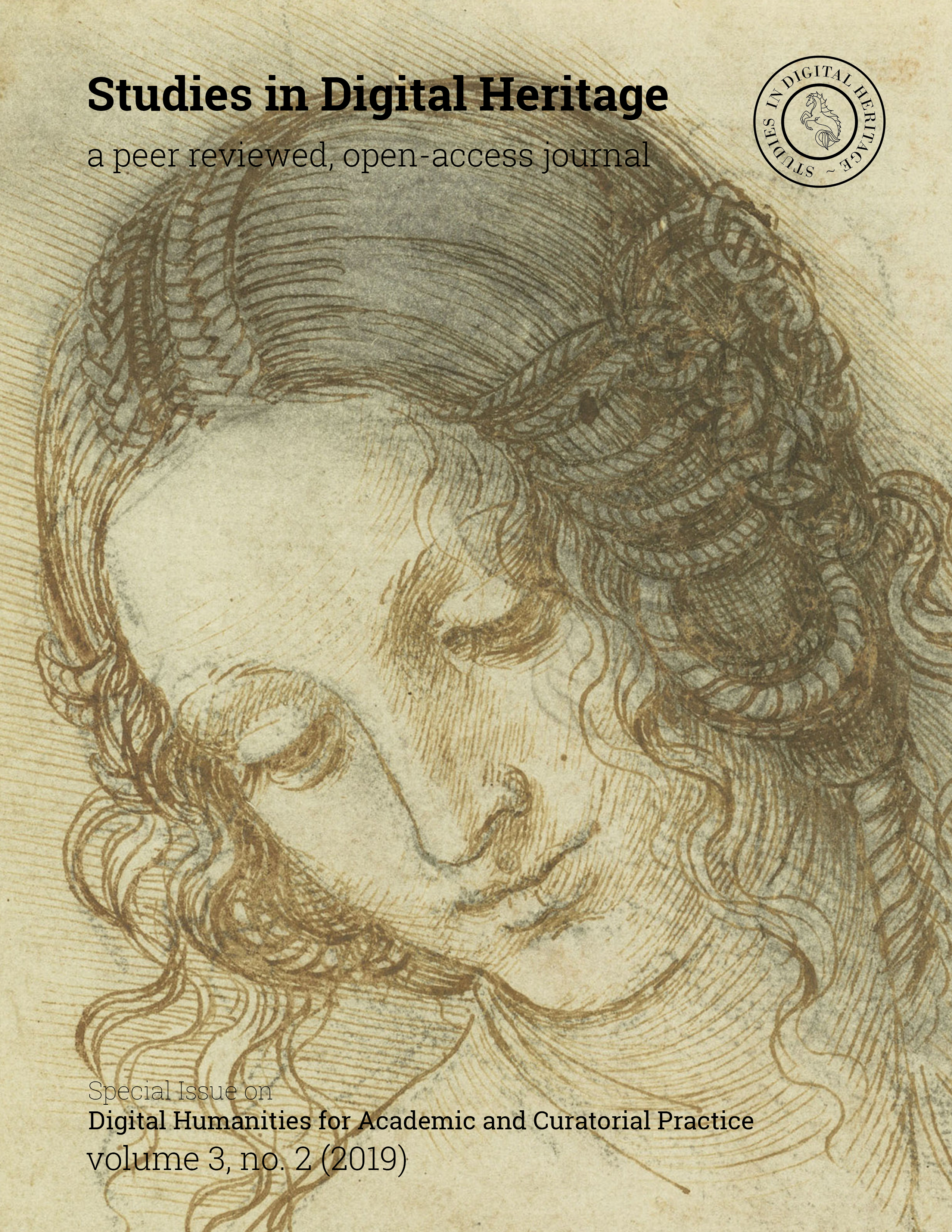Countering the "Digital Uncanny" Post-Processing for 3-D Digital Heritage
Main Article Content
Abstract
Photogrammetry and laser scanning, or combinations of the two, are increasingly used in cultural heritage settings to create three-dimensional digital replicas. Yet the technical production processes involved can sometimes result in undesirable outcomes – flattening shadows, light, and surface textural variations of original artifacts. Many of these important visual cues contribute to our understanding of digital models as ‘historical objects,’ and the resulting overly digitized photogrammetry – lacking visual context and depth – can impede user interactivity. Viewers of digital heritage can become deterred by the uncanny, static, or unreal aesthetic of some photogrammetric and laser scans. This article considers two digital heritage projects: “Emotions3D: Bringing Digital Heritage to Life,”and the Smithsonian Apollo 11 Command Module scans in order to explore how technical and curatorial decisions can address issues in photogrammetric and laser post-processing. While often subtle, different post-processing choices are perceived and deeply cognitively and emotionally internalized by viewers and users of digital cultural heritage. Therefore, this paper assesses the relevance of emotions studies, theories of the ‘uncanny’ and the ‘uncanny valley,’ and issues of authenticity and best-practice digital interventions to enhance user engagement and accessibility through digital post-processing techniques.
Downloads
Article Details
From 18 May 2018, the contents of Studies in Digital Heritage are licensed under a Creative Commons Attribution-NonCommercial 4.0 International License (CC BY-NC 4.0). Our submitting authors pay no fee and retain the copyright to their own work.
How this works: to submit their work to the journal, authors grant Studies in Digital Heritage a nonexclusive license to distribute the work according to a CC BY-NC 4.0 license. Once an article is published, anyone is free to share and adapt its contents—provided only that they do so for noncommercial purposes and properly attribute the shared or adapted information. Details of these terms can be found on the Creative Commons website.
Download SDH’s full author agreement here
Studies in Digital Heritage will insert the following note at the end of any work published in the journal:
© [Year] by the authors. This article is an open-access article distributed under the terms and conditions of the Creative Commons Attribution License CC BY-NC 4.0 (https://creativecommons.org/licenses/by-nc/4.0/).


